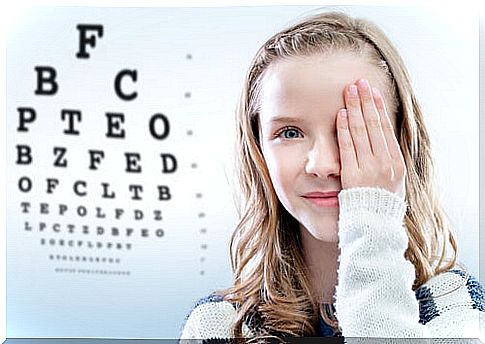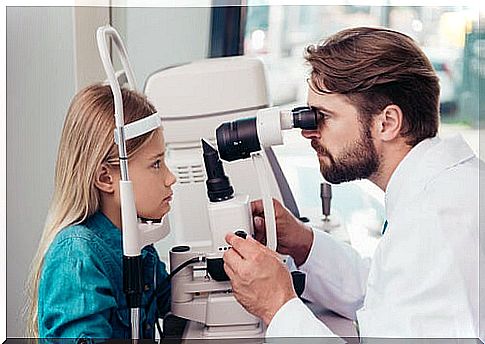Astigmatism In Children, All You Should Know

Astigmatism in children is a vision problem in which objects are observed in an unsightly way, whether from near or far. It is possible to correct astigmatism if it is detected and treated at an early age.
Astigmatism is usually caused by the curvature of the corneal surface, which, instead of being concave, has a more oval shape.
Although it is a refractive problem like myopia and farsightedness, astigmatism is perhaps one of the least understood vision defects. Therefore, astigmatism is neither an eye disease nor a health problem. It is considered another anomaly when focusing on objects.
Whether in adults or children, in astigmatism, light does not reach just a single point on the retina, which, consequently, does not produce an exact image of things. Several images are produced at different points of focus, both on the front of the retina and on the back.
Causes of Astigmatism in Children
There is no exact explanation for the causes of astigmatism in children. The main one is genetics, as astigmatism manifests itself in a hereditary way. It can also be caused by some surgical intervention, in which the most frequent cases are corneal transplantation or cataract surgery. However, these interventions are usually performed on adults.

What are the symptoms of astigmatism in children?
Astigmatism in children is usually related to nearsightedness or farsightedness, which indicates that the symptoms in both cases are very similar. Among the most common symptoms are:
- Headaches
- Congestion
- itchy eyes
- Sometimes it can present dizziness
You may also experience eye strain and headaches, especially when your child reads for a long time or does other activities that require eye focus for a long time.
Types of Astigmatism
Three types of astigmatism are known. Below we indicate the characteristics of each of them:
- Myopic astigmatism. That’s when astigmatism occurs along with myopia. The eye meridians focus as nearsighted. When this happens, it means that astigmatism and myopia can happen to different degrees.
- Hyperopic astigmatism. It occurs when astigmatism occurs together with farsightedness and the main meridians are concentrated as farsighted. Like myopic it can happen to different degrees.
- Mixed astigmatism. It occurs when one main meridian focuses as myopic and the other as hyperopic.
Also, astigmatism can be classified as regular or irregular.
regular astigmatism
In this type, the meridians are perfectly perpendicular, forming a 90 degree angle.
irregular astigmatism
In this case, the meridians are not perpendicular. The front surface of the eye has a more oval shape, like a football.
Irregular astigmatism can also happen because of an injury to the eye, leaving scars on the cornea. The injury can be caused by a surgical operation or by keratoconus, which refers to thinning of the cornea.
How is astigmatism detected?
Astigmatism can be diagnosed through vision screenings using the same devices that detect nearsightedness and farsightedness. The ophthalmologist should perform a retinoscopy to check the status of the retina.
Currently, there are advanced methods to determine astigmatism using automated devices. With this type of device it is possible to detect any vision problem with greater accuracy.

Treatments for Astigmatism in Children
- Visual disturbances (such as farsightedness, nearsightedness and astigmatism) that are not detected and corrected in time can affect the child, bringing consequences related to educational and emotional problems.
- Among the most common treatments for astigmatism in children, the most common and effective is the use of proper glasses. Typically, the defect is corrected by wearing glasses. In addition, nowadays there are glasses for younger children, with shatterproof lenses and rubber frames.
How common is astigmatism in the population?
This type of visual anomaly usually appears very early in childhood. It is extremely important to take your child for an eye exam if you suspect that he or she is having difficulty seeing or as a preventive measure.
According to studies conducted in the United States, more than 2,500 children between the ages of 5 and 17 suffer from astigmatism with 1.0 diopters (D) or greater. The same studies indicate that Asian and Hispanic children have the highest prevalence rates (33.6% and 36.9%, respectively), followed by Caucasians (26.4%) and African Americans (20%).
Studies have also been carried out in the UK. It was identified that among 11,000 children and adults who wear glasses, 47% have astigmatism of 0.75 D or more. In turn, the rate of myopic astigmatism was 31.7%, that is, twice as high as that of hyperopic astigmatism (15.7%).
Take the child to the ophthalmologist at least once a year for a review and to prevent further problems in the future.
Remember that taking care of your eyesight is critical to your children’s health. So, as much as possible, try to avoid her spending too much time in front of the computer, cell phones, or television.









